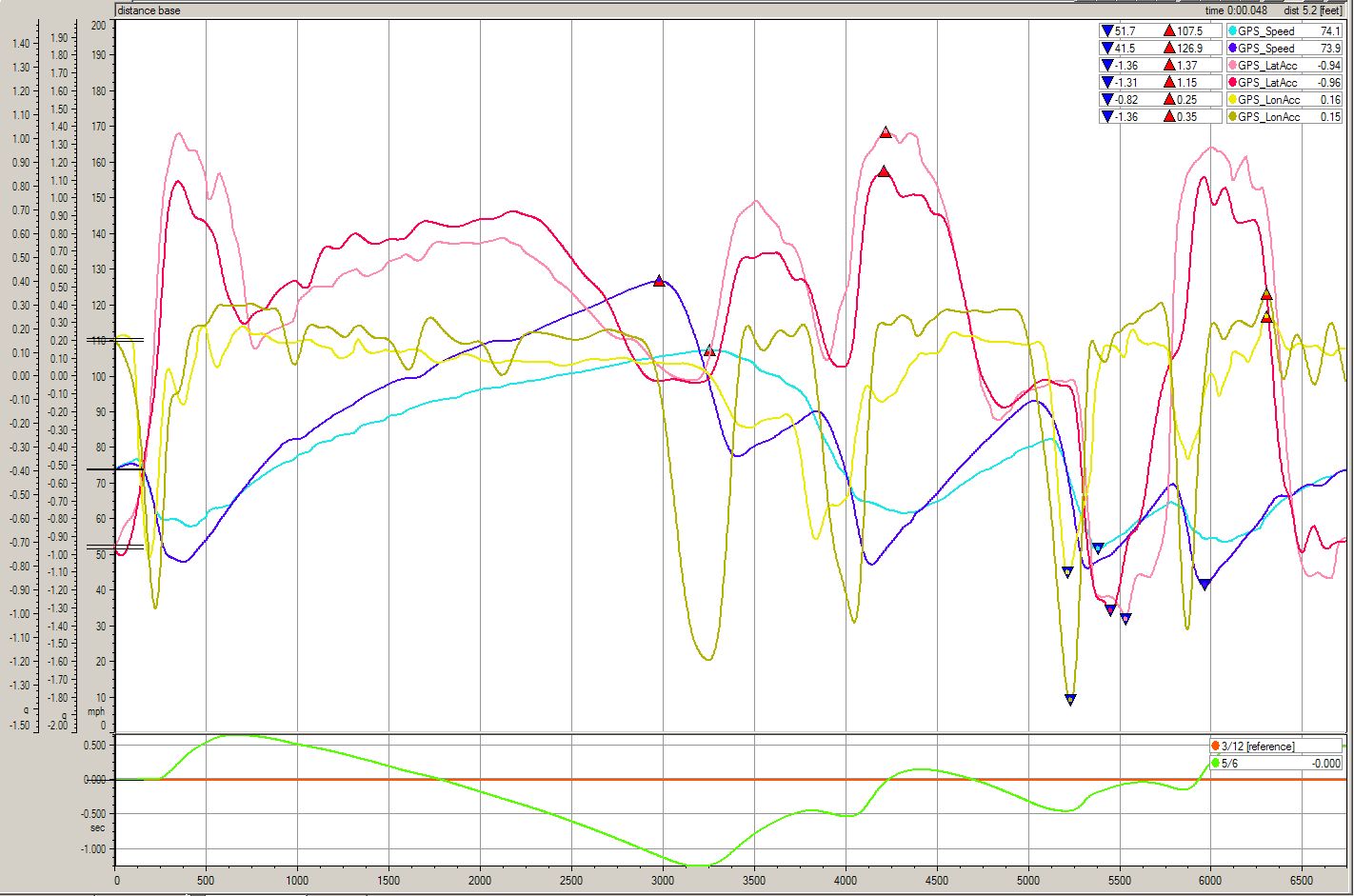Reference Points vs Feel And Approximation
Published: February 3, 2014
Reference points are important. The more of them you have, the faster you will generally be. Everyone can use more reference points. Reference points are required for consistency.
And yet, having reference points, or consistency for that matter, does not guarantee speed.
I had an opportunity to witness - and record on data - two drivers driving very different cars, with very different styles, on the same course on the same day, that vividly illustrates this point. I will call these drivers Alice and Bob. The track in question is Pocono North, conditions were dry and warm.
First, let's look at the speeds of both cars. Alice's speed is light blue, Bob's speed is dark blue. Looking at acceleration rates we can immediately conclude that Bob's car has quite a bit more power than Alice's car. Yet, Alice laps the track in half a second less than Bob. It is easy to see why: Alice carries more speed through each turn, and often much more, than Bob.
What is more interesting is how this speed is carried through. Look at forward Gs which are yellow for Alice and dark yellow/greenish for Bob. The dips indicate brake applications. Look at the shape of Bob's braking curves - they are all very similar. Having been in the car I can say that -1.3 g is the point at which ABS engages. Bob presses on the brakes until the car hits ABS, then releases the brakes. In this time the car decelerates enough to make the turn. Overlaying two of Bob's fastest laps, the speed curves are nearly identical over the entire lap. Bob is very consistent.
Now look at Alices's forward G trace in yellow. The shape of that trace varies from corner to corner. Sometimes Alice does an on-and-off brake application like Bob does, sometimes Alice trailbrakes and sometimes Alice does not brake at all but just lifts. The different shapes of the speed curve reflect this as well. Unlike Bob, Alice does not drive any two laps exactly the same. She is slightly faster in one corner and slightly slower in another. Even with those variations, by using more lateral grip Alice is faster than Bob in a less powerful car.
Comparing lateral G traces (pink for Alice vs red for Bob), we see that Alice consistently runs more lateral Gs in corners (with the exception of the oval which is taken flat out, where higher power of Bob's car yields more lateral Gs). Even if Alices is not as consistent as Bob, Bob has quite a bit of ways to go to reach Alice's lateral G levels.
Alice does not have as many reference points as Bob does. She drives more by feel and estimation. Alice makes more corrections to the car from lap to lap and during each corner. If Alice had more reference points, she would have been faster. But comparing Alice to Bob, Alice manages to run a lower lap time despite having fewer reference points and less consistency.
The technical term for what Alice is doing is traction sensing.
Tagged: advanced, data analysis

 Visit our
Visit our